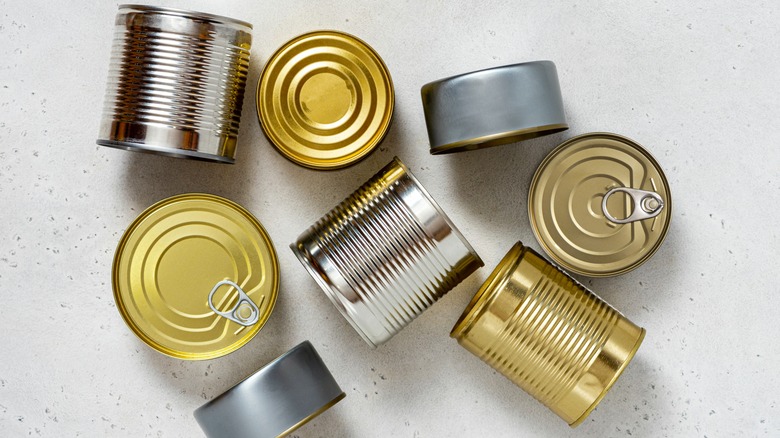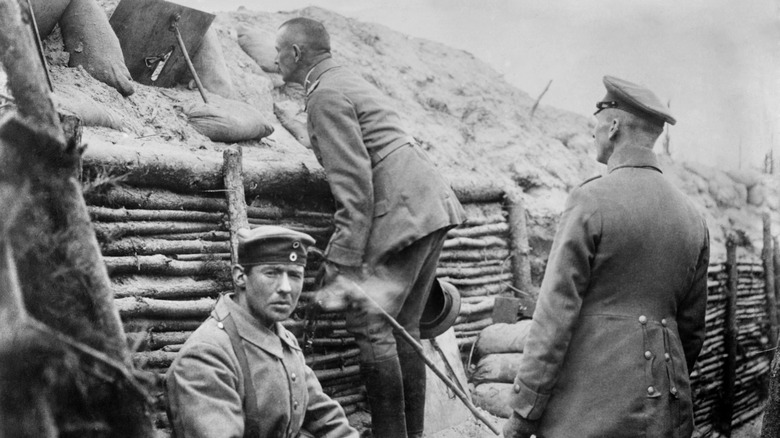How WWI Helped France's Canned Food Industry Grow
Believe it or not, food played an important role on the battlefields of history. Potatoes were used as projectiles on the Pacific Front during World War II (WWII), per Americans in WWII. According to The New York Times, if you enjoy an Americano, you have WWII soldiers to thank for its invention.
Before these gastronomic events, World War I (WWI) was ushering in a new era that would forever change how consumers thought about food. When you hear the words "French cuisine," there's probably a pretty low chance that canned food comes to mind. But WWI helped France's canned food industry grow in a major way.
According to War History Online, canned food was perfect for hungry soldiers because it was easy to transport, had a long shelf life, and could withstand the hyper-damp conditions of the trenches. Trench warfare was commonplace along the Western Front, reports History. These trenches spanned northern France and Belgium. The conditions were bad both for the men and the freshness of the food they ate. Long before WWI, Napoleon Bonaparte understood this. That's why, in 1795, he offered 12,000 francs to anyone who could come up with a way to preserve food long enough for his armies to be fed, per NPR. The result was canned food. It took 15 years, but a French confectioner called Nicolas François Appert invented the method that's today called "water bath canning." But that was only the beginning of France's role in the canned food industry.
French-made food for the masses
Per Boutique de France, by 1850, France became the first global exporter of canned food. In 1855, the British bought hordes of French tinned sardines to nourish troops. Soon thereafter, soldiers in the Franco-Prussian War and the Crimean War were introduced to canned food, explains War History Online. In fact, during the four years of the American Civil War, French canned food production skyrocketed by 600% due to export demand. By 1920, canned goods purveyor Jean Hénaff became the official food supplier of the French Navy as the Hénaff brand, which is still sold today. In "La cuisine des tranchées" via The Wall Street Journal, historian Silvano Serventi explains that WWI's French soldiers received a series of cans containing 300 grams of boiled beef, 36 grams of coffee, 80 grams of sugar, 50 grams of dried soup, and something called "war bread." (Sounds appetizing? The daily ration also included 2 ounces of liquor and 125 grams of chocolate.)
According to French historian Martin Bruegel, by the end of WWI, thousands of French veterans left the battlefield accustomed to eating canned food, so the consumer market was already there for large-scale manufacturing of the product. The United States Department of Agriculture (USDA) estimates that, in 1943, more than 4.1 billion jars of food were canned by U.S. home cooks as a result of the popularity wartime brought to canned food — and its all (or, at least, largely) thanks to France.

